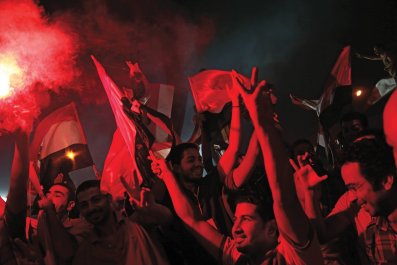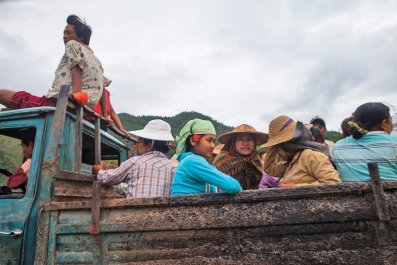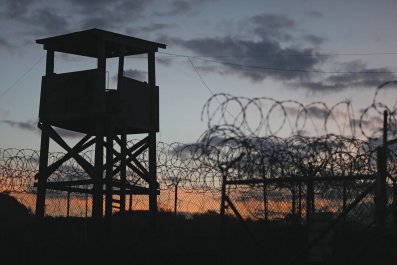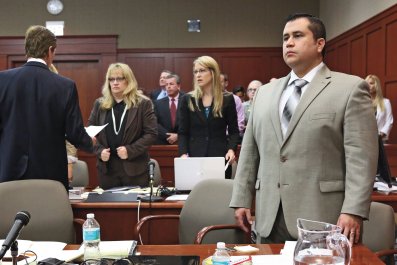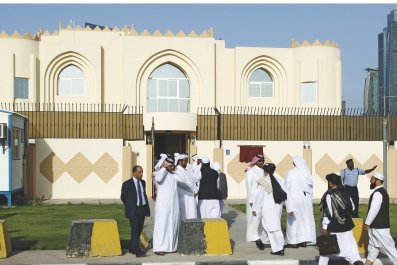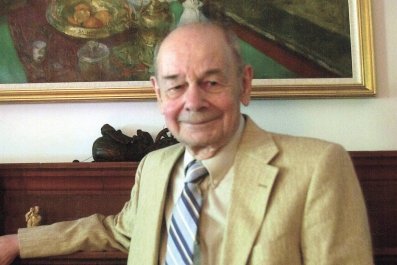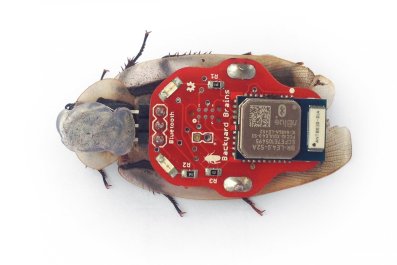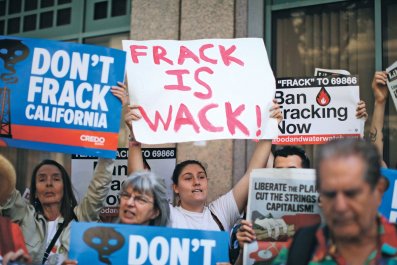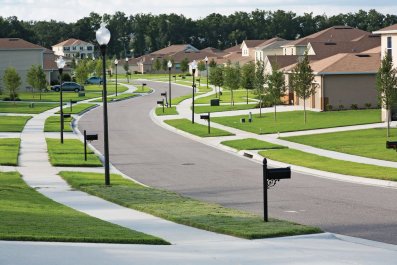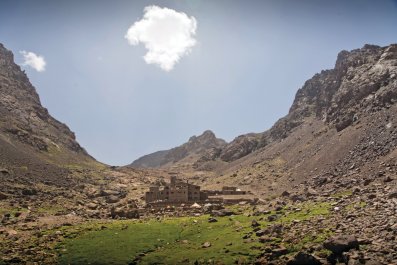Two incomplete, sun-whitened human skeletons lie spoon-fashion beneath a drought-stunted palo verde tree in the Arizona desert. Animals—most likely pack rats, coyotes, and buzzards—have strewn ribs and vertebrae and other bones along a wide swath of beige sand. Scattered among the remains are a few Mexican coins, an orange comb, a toothbrush, a short-sleeved polo shirt, a zip-up blue jacket, a pair of jeans, a pair of blue panties and bra, a single green sock, a crocheted collar adorned with fake pearls and garnets, a purple and white backpack, and a complete set of upper and lower false teeth with a yellow metal star on the right front tooth.
It's February 12, 2012, and Border Patrol agents stumble upon the grim scene while on a routine patrol about nine miles north of the Mexican line on the Tohono O'odham Nation reservation, near Sells, Arizona. The agents take a GPS reading and notify Detective Juan Gonzales of the Tohono O'odham Police Department, which has jurisdiction over the investigation of deaths on tribal lands. They then head back out into the unforgiving desert.
The following day, Detective Gonzales visits the death site. He cannot find any identification documents. There's no sign of foul play. He collects the bones and effects, places them in a white plastic body bag, and transports the package to the Pima County Office of the Medical Examiner in Tucson, about 90 miles northeast.
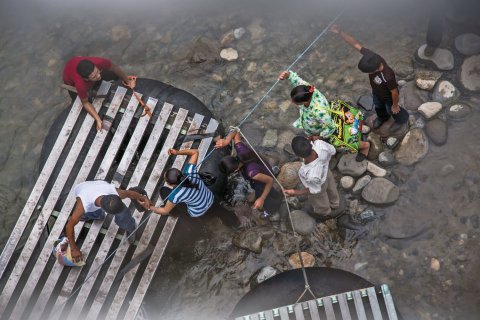
Over the next few days, Pima County Chief Medical Examiner Gregory Hess analyzes the skeletons. Hess is an expert in performing autopsies like these—autopsies of people who are presumed to have died trying to illegally cross the border from Mexico. Indeed, his office examines more migrant remains than any other medical-examiner office in the country. When these remains amount to animal-scattered sun-bleached bones that may have been in the desert for years, it is often impossible to determine how they died. There simply aren't enough clues. And so, instead of focusing on the cause of death, Hess aims to begin the long process of identifying the remains so that relatives seeking missing border-crossers can have some measure of peace.
Hess works closely with forensic anthropologists, foreign consulates, and the Arizona-based human rights group Derechos Humanos, all of which collect and tabulate reports from frantic relatives of missing undocumented border-crossers. His office also enters migrant-remains data into the National Missing and Unidentified Persons System, and partners with Humane Borders—a group famous for placing water on treacherous migrant trails—to create a searchable map of migrant deaths in Arizona.
In this case, after Hess completes his autopsy on the bones delivered by Detective Gonzales, forensic anthropologist Angela Soler rebuilds the two skeletons like puzzles, assigning stray ribs and femurs to the appropriate skulls. She determines that one skeleton belonged to a Hispanic woman aged 45 to 65, who stood about 4 feet 10 inches tall. The false teeth with the ornamental star were likely hers. Soler can't determine the sex of the other person, but telltale molars and unfused bones indicate the skeleton belonged to a juvenile, aged 10 to 13.
Increased militarization of the border dissuades some crossers, but forces others to take more dangerous routes.
The two skeletons are labeled Doe 12-00360 and Doe 12-00359. A red plastic identification bracelet is hooked through the eye socket of each skull. Bone samples are excised for DNA testing. Next, the skeletons are zipped into separate body bags and wheeled on a shiny metal gurney to the foul-smelling refrigerated room where dozens of other migrant remains are stored on shelves. Sealed in plastic bags in humid conditions, the bones begin to gather mold.

THE BORDER Patrol's Tucson Sector, where the skeletons were found, is the nation's busiest and deadliest corridor for illegal immigration, covering 262 miles of the Arizona-Mexico line. The Tucson Sector is called the "Funnel" because heavy border enforcement in Texas and California has long funneled undocumented immigrants through Arizona. Now, heightened border security that began in the early 2000s in Arizona has created funnels within the Funnel, driving more undocumented migrants away from urban crossings, and into parched desert terrain.
It has become commonplace for Border Patrol agents to discover remains of the dead in the Arizona desert. And a new study by the Binational Migration Institute at the University of Arizona—which looked at more than 2,000 deaths of undocumented border-crossers in the Arizona borderlands between 1990 and last year—found a correlation between the state's increased border enforcement over the past decade and migrant deaths. The reason is straightforward: increased militarization of the border may dissuade some undocumented immigrants from trying to get to the U.S., but for the many undocumented crossers who are determined to come anyway, it simply forces them to take more dangerous routes.
The implications of this finding for the current immigration debate under way in Washington are profound. It means that even more deaths along the border may be one upshot of the immigration reform bill now being considered by the House. That bill includes a $46.3 billion "border surge," which would further militarize the United States–Mexico line, increasing the number of Border Patrol agents from 18,500 to 38,500, and adding 350 miles of fence to the 2,000-mile boundary. The Congressional Budget Office estimates that this increased enforcement would reduce illegal immigration by 30 to 50 percent. But for those still set on coming to America illegally, the journey will be a lot more hazardous. "If the past is an indicator of the future," predicts Daniel Martínez, the lead author on the Binational Migration Institute study and a sociology professor at George Washington University, "increased border enforcement will likely lead to more deaths on the border."
The stories of those dead—who they were in life, why they took such extraordinary risks to come here—often go untold. And so it was for Doe 12-00360 and Doe 12-00359. At least at first.

IT'S 1978. On the day her grandmother disappears, Fermina Lopez Cash is 12 years old and harvesting coffee at a large farm on the slope of a mountain in western Guatemala, near a small community called Tuibuj.
Fermina is a thin, small Mayan girl with fiery black eyes and a shiny black braid that reaches down to her waist. Dressed in traditional Mayan clothes—an ankle-length cotton patterned skirt called a corte, a short-sleeved smocklike blusa, and a brightly colored delantal, or apron—she's dwarfed by her large white coffee-bean bag. Like most of the children she knows, she's illiterate. She attends school only once in a while, when she isn't needed to wash clothes in the river, or harvest, or make tortillas, or chop wood, or care for younger siblings.
On this day, as she picks the reddish fruit from coffee plants, she hears a truck pulling up to the family farm, where her grandmother Cipriana Chilel works the land. She hears the shouts of men, the roar of the truck as it travels down the mountain.
A bloody internal conflict between the Guatemalan government and rebel guerrillas has been raging for close to two decades now; human rights abuses by the government are widespread. When Fermina and her mother, Maria Candelaria Cash Chilel, return to Cipriana's house, where they live with their extended family, their relatives say army soldiers accused the old woman of giving the guerrillas food, and took her away in their truck. Terrified by the family matriarch's disappearance and the continued presence of soldiers in the area, Fermina's extended family abandons their land and scatters. Uncle Rufino Perez hides in the mountains, then escapes to Chiapas, Mexico. Fermina's father, Alberto Lopez, takes one son and daughter to Mexico City. Fermina and her mother travel throughout western Guatemala, harvesting sugar cane, coffee, rice, and cotton.
Mario José Ramirez, Fermina's grandfather, remains in the Tuibuj region. Two years later, he disappears. Villagers say he was shot by soldiers and is buried in a mass grave in the mountains.

When she's 18, Fermina helps her mother buy a small piece of land in the poorest section of El Porvenir, a town in San Marcos, a Guatemalan state that borders Chiapas, Mexico. Fermina and her mother have worked side by side for years now, and they're like sisters. They build a one-room wood-and-tin shack with a dirt floor on their land. They plant banana trees and coffee plants near the outdoor kitchen, a cooking fire and a shaded table a few steps away from the house. For luck, they plant corn near the door.
But there is no luck. Fermina's mother and father have split up. One sister, Romelia, and a brother, Rosendo, live with Alberto. Another sister, Ana, dies of a mysterious stomach ailment. The two younger girls, Clarissa and Lucia, live with Fermina and their mother, Candelaria. Often, there is not enough food. Fermina pines for the family farm in Tuibuj, which was taken over by another family after her grandparents disappeared.
A man in El Porvenir tells Fermina he wants to marry her, then disappears after she gets pregnant. She's 23. Her son, Jorge, is a baby on the day Fermina's mother walks to the downtown marketplace with Clarissa. A car stops beside them. Men push Fermina's mother into the car and drive off, leaving the child on the sidewalk.
Candelaria disappears in March 1989. Guatemala's civil war has been raging for nearly three decades. The army sets up an encampment in El Porvenir, and villagers stay in their homes as much as possible.
Of the 1 million Guatemalans displaced by civil conflict, several thousand sought safety in the United States.
Fermina and her sister Romelia walk to the military encampment and ask if their mother is detained there. "Was she a guerrilla?" a soldier asks. "She probably fed the guerrillas."
"She didn't feed the guerillas," Fermina says. "I know she isn't a guerrilla. I was with her every day. All she does is work."
The soldiers say they might find her mother if she pays them money. Fermina says she has no money. She goes to the police. They say they can't help her.
Now she's got three kids to take care of—two little sisters and her own baby. For months, she looks down the narrow dirt-and-stone street to see if her mother is coming home.
DYING TO CROSS
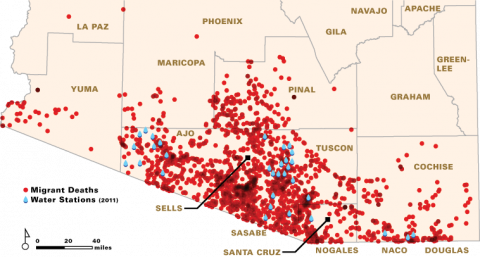
"Quit moping and looking down the street," another single mom tells Fermina. "Come have a drink with me." They share aguardiente, a powerful liquor made of sugarcane, and it helps Fermina forget about her mother, if only for a few hours. Some days, she pulls out a picture of herself and her mother and Romelia, standing in front of a tree with pink flowers. It is her only photograph of her mother, and she treasures it.
"Fermina works like a man," the neighbors say. She cuts dry wood with a machete in the mountains some two kilometers from town, then hauls it to El Porvenir on her back, anchoring the load with a forehead strap. There are days she has only salted tortillas for the kids to eat.
Her father takes the little girls to live with him. Alone with her toddler son, Jorge, Fermina falls in love with a married man. She has two more children—first Veronica, then Nelson Omar, who is born in April 1997 on the street near the plaza in El Porvenir because Fermina can't finish the long hike to the midwife's house.
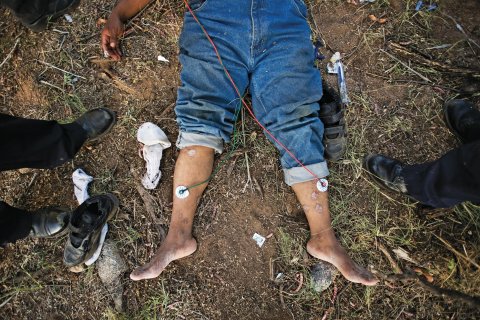
THE YEAR Fermina becomes pregnant with Omar, 1996, the Guatemalan government and the Guatemalan National Revolutionary Unity (the guerrillas) sign a peace treaty. One of the longest civil conflicts in Latin America officially ends. Three years later, the Commission for Historical Clarification, an investigative group approved by both the guerrillas and the government, issues a human rights report. It estimates that 200,000 people died in the confrontation, including 40,000 "disappearances."
The commission makes clear the culpability of the United States in helping fuel this crime against humanity. Washington, which had ousted Guatemala's elected president Jacobo Arbanz in 1954, periodically provided military assistance to subsequent anti-communist Guatemalan governments, enabling their brutality. In the words of the commission, U.S. aid was "directed towards reinforcing the national intelligence apparatus and for training the officer corps in counterinsurgency techniques, key factors which had a significant bearing on human rights violations during the armed confrontation."
While guerrillas committed some "violent and extremely cruel acts," the report finds that the Guatemalan government and its paramilitary groups were responsible for 93 percent of the documented human rights violations during the conflict, including 92 percent of the arbitrary executions and 91 percent of the forced disappearances. The commission also notes that "the vast majority" of human rights victims were Mayans who were identified by the government as "guerrilla allies."
In the years that follow, groups like the National Security Archive in Washington uncover additional documents that back up the commission's report on human rights violations. "There was wholesale targeting of Mayans in some areas of the highlands," says Kate Doyle, a senior analyst with the National Security Archive. The conflict created "massive human movements" among the "totally marginalized poor."
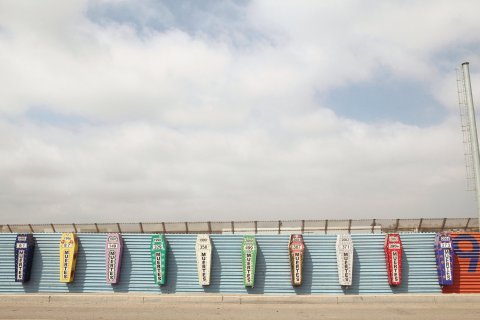
WITH HER three kids in tow, Fermina now travels back and forth between Peronia, a slummy suburb of Guatemala City where she builds a shack and sells tortillas, and El Porvenir, where she harvests coffee and sees the married man she loves. The father of Veronica and Omar is poor and has his own wife and children to care for. Occasionally he gives Fermina money, but it is never enough. The coffee harvest lasts only three months, and she earns about $270 total. She clears about $3 each day selling tortillas in Guatemala City. With this, she feeds and dresses her kids, pays housing expenses, buys school supplies and uniforms. Jorge completes sixth grade. Veronica is needed at home and drops out in third. Omar, she vows, will stay in school as long as possible.
The long civil war has unleashed a culture of violence, and the murder rate continues to climb after the peace treaty is signed. A gang called M-18 extorts money from Guatemala City slum shopkeepers for "protection" and kills those who don't pay.
Fermina hasn't prayed for years. But in the slum, evangelicals convince her God is good, and promise a glorious heaven for true Christians. Eventually she converts. She quits drinking and breaks up with the father of Veronica and Omar.
Omar is Fermina's favorite child. He's a placid, tiny kid with large black eyes. He's docile and obedient. If it's raining and the dirt floor is muddy, Fermina tells Omar to sit on the bed and not get off until the floor dries, and he obeys. She hits her other two kids when they disobey, but she has never hit Omar.
Each time she returns from Peronia to El Porvenir, she sees changes. Of the 1 million Guatemalans displaced by civil conflict, several thousand sought safety in the United States. Villagers from El Porvenir settled in Arizona and Pennsylvania, and poverty-stricken friends and family members have subsequently joined them.
Bigger houses with indoor plumbing and several rooms begin to sprout up on the hilly streets of El Porvenir, the construction bankrolled by remittances from family members in Philadelphia and Phoenix. Often, it takes years to finish the houses, and family members live in them even though rebar reaches into the sky, or block walls await completion. In El Porvenir, the locals call it "remittance architecture."
A sign at the Guatemalan consulate warns, 'Every day, three people die on the border and it's never the coyote.
Remittance architecture is a testament to the American Dream, and in the spring of 2006, Fermina decides to migrate to the United States, save enough money to buy land in Guatemala, and return home. She figures she can send money to the kids, and they can take care of themselves in Peronia. Jorge is 17 and working construction in Guatemala City. Veronica is 13 and able to care for Omar, who is 9. Fermina cuts a deal with a neighbor in Peronia: the neighbor and Veronica will make and sell tortillas when Omar is in school. Between that income and Jorge's construction job and remittances from Fermina, she's not worried about the kids. If they don't like living in Peronia they can move in with friends or relatives in El Porvenir. She won't be long in the United States; she just wants to save money, then return to Guatemala to buy land as rich as the family farm in Tuibuj.
Another neighbor, Edelmira, who has crossed into the United States illegally several times, lends Fermina $5,000 at 10 percent interest per annum to pay the smuggler. When Fermina leaves for the United States on a spring day in 2006, the older kids know of her plans. But Fermina tells Omar she's just going down to the store and will be right back because she doesn't want him to cry.

FERMINA KNOWS Central American migrants are preyed upon in Mexico, so she tries to appear Mexican. In Tapachula, just across the border from Guatemala, she abandons her traditional, comfortable Mayan clothes for the first time in her life. She changes into a Ladino outfit—a knee-length skirt and T-shirt. She buys fraudulent documents that say she is a Mexican citizen.
Careful not to speak and betray her Mayan roots via her heavily accented Spanish, she travels several days by bus to Altar, Sonora, a few miles south of the Arizona border. Altar is a staging area for the long desert crossing; human smugglers gather their client groups here. She meets a coyote and embarks on a journey through the desert. She has no idea where she is. Ayúdame Diosito. Help me God, she prays. The group hikes about 10 miles each night and sleeps in the day to avoid the Border Patrol. She tries to conserve her gallon of water and refills it from a few mud puddles, but she is always very thirsty. She prays for strength to keep up with the guide. On the morning of the fifth day, the group arrives at a paved road, climbs into a vehicle, and travels about 100 miles northeast to Phoenix.
Edelmira's sons pay the coyote for Fermina's passage. Fermina will stay near the sons for one year until she pays off her debt to Edelmira.
She settles in a Guatemalan neighborhood in a poor district of central Phoenix. There are Guatemalan food stores, evangelical churches, and restaurants. Whole apartment buildings are rented by Guatemalan immigrants—four can share rent for a one-bedroom apartment.
Not long after she arrives, Fermina falls in love. Florentin Zaccharias lived in the highlands above El Porvenir, and he and Fermina knew each other when they were kids. He's left behind a wife and two children. He works in a juice factory, sends monthly remittances home, and is a devoted evangelical. He's gentle with Fermina, comforts her, respects her, talks to her for hours. They are so far from Guatemala, what could be the harm in their relationship?
Fermina works part-time jobs—she delivers telephone books for $3.80 hourly, paints furniture for $7.25 hourly, irons tablecloths and sheets at a professional laundry for $7.35 hourly, and sells homemade tamales on weekends. The kids in Guatemala City are getting regular remittances, and Edelmira's debt is almost paid off. Then Fermina gets pregnant.
When Fermina can no longer hide her pregnancy, she's fired from her jobs. A former co-worker puts her in touch with an American lesbian couple in Phoenix that has just adopted two Guatemalan kids.
It's 2007. Fermina has lived in Phoenix for a year. She shares an apartment with Florentin and four other guys and they all sleep on the floor. She knows neither she nor Florentin can feed or clothe their unborn child. Their baby will have a better life with the two white women, Fermina decides. Florentin is heartbroken, but agrees.
The future adoptive moms help Fermina obtain medical care, put her up in an air-conditioned apartment, feed her nutritious food, and help her buy care packages for the three kids in Guatemala: clothes, gummy vitamins, school supplies, shoes. One of the adoptive mothers pumps her own breasts every two hours for weeks. When her son is born, Fermina puts him on the adoptive mother's breast, and teaches her how to nurse.
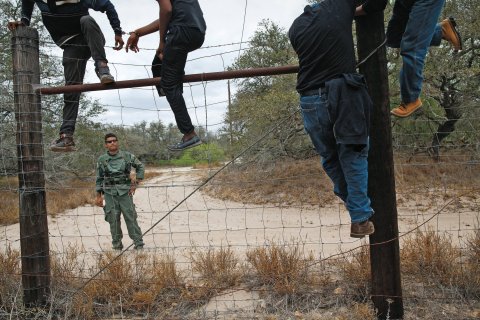
JORGE SHOWS up in Phoenix a few days later.
The tortilla business has failed. Veronica has been deeply lonely. There's no money for her schooling, and the kids in Guatemala City do a lot of alcohol and drugs. The M-18 gang is a menace. Omar has been getting whiny. Jorge has struggled to keep the siblings safe. When he's 19, he decides to illegally cross into Arizona and join his mom, leaving his younger siblings with relatives in El Porvenir. He doesn't tell Omar he's leaving.
Nothing goes right on the trip north. In Mexico City, a taxi driver robs him. Jorge is grateful his mother taught him to always sew a secret stash of cash in his clothes. Next, the desert crossing is hot and exhausting, even though it's the rainy season. In Phoenix, he's held for ransom by the coyote until Fermina and the women who have adopted Gabriel pay his way out of the drop house. (Gabriel's name has been changed to protect his identity.)
Fermina arranges for Veronica and Omar to stay in El Porvenir. They bounce around from house to house feeling like burdens—living with an aunt, then a grandfather, then a neighbor. Every week, she calls. The kids tell her they're miserable. They miss her cooking, and her bossy affection.
Veronica crosses the Arizona desert with an evangelical coyote in 2008. "Ustedes ya no me quieren"—you all don't love me anymore—Omar tells his mother on the phone. He begs her to bring him to Arizona. Fermina tells Omar to stay put until he finishes sixth grade. When he finishes, she tells him to wait until he finishes seventh grade. She'll come home by then, she says, with money for a farm just like the family farm in Tuibuj.
Then Omar starts cutting classes at his school, Escuela Justo Rufino Barrios. He hangs around the schoolyard and makes friends with an older woman who sells tostadas. Her name is Maria Teresa Gonzales Cax, but she is known locally as Doña Teresa.
In 2010, officials noticed a surge of children crossing the border without their parents or guardians.
A stout 55-year-old woman with short black hair, Doña Teresa has borrowed too much money to pay for a house. The debt collector is threatening her; the interest is compounding. She is illiterate and has no way to earn money, other than making tostadas at her lunch stand. She lives across the street from one of the fine houses built with remittances, and concludes she can pay her debt only if she works in the United States.
Omar has just turned 13. He hasn't seen his mother in four years, his brother in three, and his sister in two. In his school picture, he's a small frowning boy dressed in a crisp white shirt and navy blue pants.
He's living with Roxana de Peréz and her husband and kids, right next door to Fermina's shack in El Porvenir. (Omar's best friend, Yesmar, is Roxana's son.) Fermina sends Roxana $57 monthly for Omar's upkeep, and she sends Omar about $30 each month for school snacks and school supplies. Sometimes, Omar plays in his mother's shack, near the banana trees and coffee plants.
Once, he vows to build his mom a fine house just like the remittance houses in El Porvenir if she lets him come to Arizona with his new friend Doña Teresa. On a different call, Omar says a strange man has started living in Fermina's shack and if she doesn't bring him to Arizona, the man will kill Omar. Fermina finally relents. She sends Omar and Doña Teresa $800 for the first part of their journey.
Doña Teresa and Omar travel a few miles by bus to El Carmen, where the Suchiate River separates Mexico and Guatemala. It's a major crossing point for thousands of Central Americans en route to the United States. The Hotel Arizona is just up the street from the bridge, along with a luggage shop. Street vendors hawk American dollars. Doña Teresa and Omar walk legally across the bridge with shopping visas. Omar's backpack is weighted down with the hammer he's bringing to build his mother a house.
The two travelers linger in Tapachula, in the state of Chiapas, Mexico, for almost a month. They stay with Doña Teresa's sister, a Mexican citizen. The sister's husband collapsed on a desert border crossing into Arizona 10 years before; he was revived by the Border Patrol and ultimately deported. He'd been in the desert three days, and has never been the same.
Fermina and Florentin are getting worried. The desert is getting hotter; why is Doña Teresa dawdling in Tapachula? Doña Teresa says she's having difficulty finding smugglers and buying fake Mexican documents for Omar. Those documents will not only help ensure a safe passage through Mexico; they will help ensure that Doña Teresa and Omar will be deported to the Mexican line, and not Guatemala, if they're caught by immigration officials in the United States. (Doña Teresa will use her sister's Mexican ID for the journey.) In the meantime, Omar is spending precious travel money at the arcades with his new friends.
In late June, Omar and Doña Teresa board the bus for Altar, Sonora, where they wait another few days while the coyote gathers enough clients to make up a group willing to cross the Arizona desert in the triple-digit July heat. Doña Teresa and Omar tell Fermina they have Mexican IDs and at least one backpack. Doña Teresa has packed her prized crocheted collar adorned with fake pearls and garnets. Omar has packed his orange comb and toothbrush.

IN 2010, the year Doña Teresa and Omar make their journey, federal immigration officials are taking notice of a new surge of undocumented border-crossers. They're kids, technically called "unaccompanied minors," meaning they cross the border without their parents or legal guardians. Most come from nearby Mexico, but more and more are from Central America. In 2008, the Border Patrol apprehended 1,388 unaccompanied Guatemalan kids crossing the southern border illegally. By 2012, that number will have risen to 3,835 kids.
The main reason for this trend, says Cecilia Menjivar, a professor at the T. Denny Sanford School of Social and Family Dynamics at Arizona State University, is the desire of kids to be reunited with parents they haven't seen in years, and "particularly their mothers." The children are often the instigators of the border crossings, and so, she says, travel plans are "often haphazard."
On July 6, a coyote phones Fermina. Doña Teresa and Omar are part of a group that will cross into the Arizona desert that night. In a few days, they will arrive in Phoenix, and he will advise her of the drop-house location. Jorge buys his little brother a videogame.
Several days later, the coyote calls Fermina again. On the first day of the crossing, Doña Teresa could no longer keep up with the group and Omar stayed behind with her, he says. Don't worry, he tells Fermina, the Border Patrol will pick them up. They will be fine.
It's the summer of 2010, and Arizona's famous immigration law, SB 1070, has been passed. The law essentially makes it a state crime for unauthorized immigrants to set foot in Arizona, and Sheriff Joe Arpaio is raiding Latino neighborhoods and workplaces in the Phoenix area. As a result, the undocumented people who have not fled Phoenix, including Fermina, equate law enforcement with immigration enforcement. Fermina is afraid to report her missing son to the cops, because she is scared they might deport her. Then what would she do if Omar showed up in Phoenix?
Instead, she turns for help to Lydia Guzman, a local immigrant-rights activist in Phoenix, as well as Gabriel's two moms, who have moved to Massachusetts because they fear law enforcement will harass their three Guatemalan children if they raise them in Arizona.
While Guzman notifies human rights groups, the Pima County Office of the Medical Examiner, the Border Patrol, and the news media, the moms in Massachusetts hound the coyote with phone calls. He says not to worry: the Border Patrol will find Omar and Doña Teresa. Then he disconnects his phone. Gabriel's adoptive parents turn to immigration officials who deal with unaccompanied minors, check shelters, call human rights groups. They call everyone they can think of, explaining each time that Omar had Mexican, not Guatemalan documents.
Fermina talked to the media. It's safer to call reporters than cops. Reporters don't enforce immigration laws.
When she isn't working at the juice factory with Florentin, Fermina waits for Omar's call. She talks to print and broadcast media, but doesn't reveal her immigration status. It's safer to call reporters than cops. Reporters don't enforce immigration laws. She files a missing border-crosser report at the Guatemalan consulate in Phoenix. She tries to file a similar report at the Mexican consulate, but since Omar was using fake Mexican documents, the consulate can't help her.
In Guatemala City, Fermina's uncle, Toribio Chilel, notifies the Guatemalan government and human rights groups. He searches for Omar in the slum where the kids had lived, and in El Porvenir.
The months pass, and still there is no word from Omar. Fermina sits by the phone and prays. She remembers her mother's disappearance and her grandparents' disappearance. She knows God is good and wouldn't do this to her again.
Each Sunday, at the Iglesia de Dios, she is reminded of God's goodness. "We love your presence, we love you God," the band sings. "There's life after death." God make a miracle for me, Fermina prays.
After a few months, the media loses interest in the case. Lydia Guzman and Gabriel's moms keep calling immigration authorities and human rights workers, and Fermina keeps visiting the Guatemalan consulate. But no one has found Omar.
Fermina dreams. In one dream, Omar is tiny and with his father. In another dream, Omar is in a large room with many children. When she awakens, she asks herself: where is the room? In the United States? In Mexico? Is the room part of a school? Or a church?
Fermina and Florentin begin hearing rumors from other immigrants. Omar is sighted in North Carolina. Doña Teresa is sighted working at a pizzeria in Houston. They're alive, Fermina thinks, they've just lost my phone number.
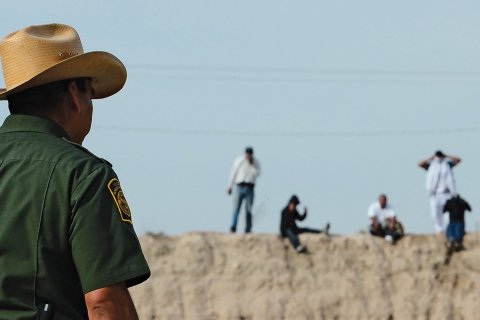
ABOUT A year after Omar disappears, Veronica gives birth to a son, Daniel. The father leaves Phoenix, fearful of getting swept up in a sheriff's raid and being deported. Veronica tracks him down on Facebook, and he's on the East Coast. She's struggling with school, having had only three years of education in Guatemala, and though she tries hard, she can't pass all the standardized tests that lead to a high school diploma.
Fermina and Florentin arrange their work schedule at the juice factory so that Fermina can watch her new grandson while Veronica is in school. "God has blessed you with a grandson," Florentin says, trying to make Fermina feel better about Omar's disappearance. "It's not the same, and you know it," Fermina answers.
Every day, she waits for Omar's call. And when he doesn't call, she tells herself that he'll call tomorrow. Every day I thought I'd see my mother's face, she thinks. Now every day I think I'll see Omar's face.
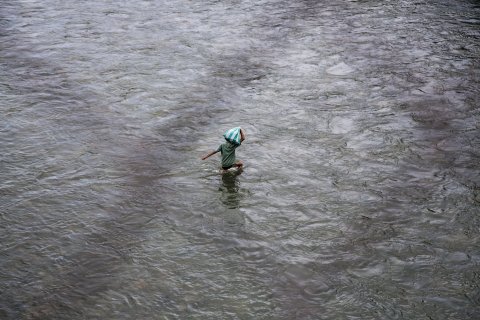
THE PARTIAL skeletons of a child and older woman are found in the Arizona desert in early 2012. The coroner's office notifies foreign consulates and human rights groups, and they in turn have one report that sounds like a match. It was filed in 2010 by Fermina as well as Gabriel's moms and Lydia Guzman, and involves a 13-year-old boy and a 55-year-old woman who crossed the desert in the same area where the skeletons were found.
Three months after the bones are discovered, Fermina is called into the Guatemalan consulate in Phoenix. Her mouth is swabbed for a DNA sample, to see if her DNA matches the DNA of the bones found in the desert. She sees pictures of the skeletal remains and the false teeth with the star. She weeps at first, then tells herself the bones cannot be Omar's because she knows he is alive. She calls Doña Teresa's family in El Porvenir, and they say the false teeth don't belong to their relative. Secretly, Doña Teresa's family believes she is alive too, hiding out in Mexico or the United States because Omar has vanished while under her care and she fears she will be arrested.
Three weeks after Fermina gives her DNA sample, the Guatemalan consulate tells her there's a very strong chance that the skeleton belongs to Omar, but scientists want to test the DNA of Omar's father as well. In August, Fermina buys Omar's dad a bus ticket to travel to Guatemala City so authorities can swab his mouth for a DNA sample.
Another Christmas passes without Omar. And then another Easter. It's early April 2013 when Fermina and Florentin are summoned to the Guatemalan consulate in Phoenix.
In the waiting room, they sit together on chairs near walls covered with posters that warn of the dangers of crossing the desert. Para el coyote es cosa de suerte. Para ti es cosa de muerte, one sign warns. (For the coyote it's a matter of luck. For you it's a matter of death.) Cada día mueren tres personas en la frontera nunca es el coyote. (Every day, three people die on the border and it's never the coyote.)
Vice-Consul Carlos de León summons the two into his office, where a pastor and his wife await them. The vice-consul has arranged a joint Skype call with Doña Teresa's family in Guatemala, and a member of the Argentine Forensic Anthropology Team, which has helped with the DNA testing. The skeletal remains of Maria Teresa Gonzales Cax and Nelson Omar Chilel Lopez have been positively identified. Fermina breaks down, and the pastor tells her to trust in God. At least the search for Omar is over, the pastor says.
At the Office of the Pima County Medical Examiner on April 16, Dr. Gregory Hess closes out his reports. He can't be sure, but he suspects Doña Teresa and Omar died of heat exposure. After the group left them, they likely lay down beneath the tree for scant shade. As their body temperatures rose, their cellular functions shut down. One by one, or perhaps together, they became flushed, nauseated, fatigued. They may have become delirious. They were not necessarily in pain, but likely uncomfortable. Then they passed out and died.
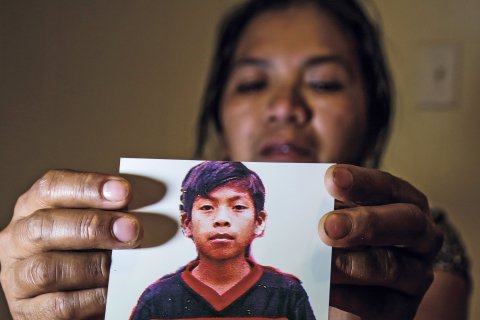
FERMINA AND Florentin now live together on the west side of Phoenix, in a house they share with two other Guatemalan immigrants. Near the front door, there is a sign made of yellow-brown plastic autumn leaves that says, "Welcome!" In the backyard, Fermina steams the tamales she still sells door-to-door each weekend.
I had met Fermina for the first time in January of this year, several months before she would receive the results of the final DNA test. (I asked to meet her after Lydia Guzman—the activist who had reunited dozens of missing migrants with their families—told me this was the one case she had been unable to solve.) Over the next few months, I visit Fermina about once every two or three weeks, and meet and speak with many of the people who have played a role in her story—including her children, Florentin, one of Gabriel's moms, and her relatives and neighbors in El Porvenir.
When I visit Fermina in May, she sits at a table holding a Kleenex. She's about five feet tall, with long black hair that hangs to her knees when it's not braided. She's 47 now, with a wide-set face and dark, sad eyes. She wears a jean-skirt that is almost down to her ankles, a flowered blouse, and sandals. Her grandson begs for attention; she tears off a piece of corn tortilla, sprinkles it with salt, and absently hands it to him.
"Why did this happen?" she wails to Florentin, who sits on the couch.
"Hundreds cross the desert," she says. "Omar had food and water. Did Doña Teresa make him stay with her? Did he die of heat? Did he die of thirst? How did he die?"
"There are so many questions," Florentin says, looking down at his nails stained pink from juice concentrate. "We have no answers."
She looks at a bag of fresh cherries on the table. She says, "Omar never tasted a cherry." If her mother had not disappeared, she says, she could have left the kids with her and none of this would have happened.

OMAR AND Doña Teresa have papers for their last journey. Their remains are transported from Tucson to a funeral home in Phoenix, where they are placed as delicately as possible in separate metal boxes. From Phoenix the small boxes are flown to Dallas. On June 14, they are loaded onto American Airlines Flight 2137 bound for Guatemala City. I am on the same plane, because I am traveling to Guatemala to attend Omar's wake and burial.
Uncle Toribio is waiting at the airport for Omar's body when it arrives in Guatemala City. He helps a funeral-home official transfer the closed metal box into a large silver casket decorated with metalwork depicting the Last Supper and angels. He watches as the casket is loaded into a white hearse, then climbs in beside it for the seven-hour drive to El Porvenir.
In El Porvenir, neighbors and relatives greet the hearse at the bottom of a hill and take turns carrying the casket up the steep rock-and-dirt road to Fermina's shack. It's raining, and the shack is in a sad state of disrepair, but someone has anchored plastic sheeting with rocks on top of the roof to try to keep it dry.
The shack has been turned into an altar. The silver casket is lowered onto a stand and framed with lace curtains. Someone puts Omar's school picture on top of the casket. There's a plastic salad bowl for donations to help defray funeral expenses, but in truth the entire $1,500 funeral has been prepaid by Fermina, who has micromanaged arrangements from her cellphone in Phoenix. This is her last act of long-distance mothering, and she wants it to be perfect. She can't risk going to the funeral, because she has no papers to return to the United States. (Her fear of not getting back into the U.S., where Jorge and Veronica now live, eclipses her fear of being deported: Arpaio is no longer raiding neighborhoods and workplaces, thanks to judicial decisions and federal immigration policies that have curbed his enforcement power.)
Over the phone in Phoenix, Fermina has arranged for 20 beige plastic chairs to fill her shack. Outside, two patched tarps cover about 80 more plastic chairs, and speakers blare the same high-decibel praise music that Fermina hears in her church.
Fermina's father, Alberto, sits on one of the plastic chairs and stares at his grandson's coffin. He's a small, thin, expressionless man dressed in a green shirt and brown slacks. He didn't know Omar was leaving; no one informed him, and he would have stopped it, he tells me. Thank God they found him, he says. He stays with the coffin all night.
His family has scattered. Fermina, Rosendo, Lucia, and Clarissa are all in the United States. Only Romelia remains in El Porvenir.
Marco Antonio Luis Mendez, a 52-year-old pastor, tells me that he knew Omar his whole life. "He lost his life because of poverty," he says. "Fermina struggled for her kids without a man to help her." The boy went to Arca de Salvación church every Sunday. Not all kids are as good as he was; not anymore. They steal and do drugs and are disrespectful. "First we were afraid of the army and the guerrillas," Marco tells me, "and now we're afraid of the kids."
The official pastor comes around 9 p.m. He talks about Lazarus. He sings a song about leaving the Earth and being in the arms of the Savior. He talks about the boy "who isn't here" but is inside the casket and how he accepted God and how the lives of immigrants carry great peril.
A few blocks away, the family of Doña Teresa stands before a coffin in a similar altar. There's a picture of Doña Teresa wearing her favorite blue dress, and a tub of flowers. "People said they'd seen her in Chicago," says her son Gilberto. "She was illiterate and we thought she'd lost our phone number and couldn't get in touch with us … Thank God they've found her and brought her home."
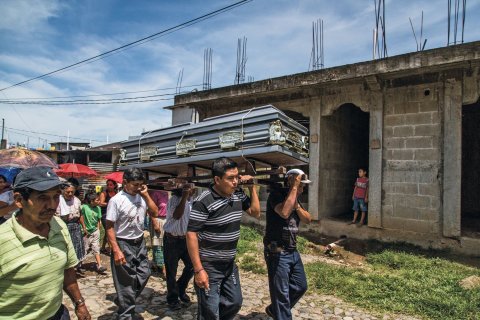
THE NEXT day is sunny, and the air smells of cooking fires. The mortuary officials arrive about noon and place the tubs of flowers and paper wreaths in the back of their pickup truck, which blares praise music from four speakers.
Carefully, Omar's uncles and aunts and cousins and friends take turns carrying the coffin through the streets of El Porvenir. The older women wear their Mayan clothes and shade themselves from the hot sun with colorful umbrellas. When the praise music stops looping for one or two seconds, you can hear the sound of their sandals hitting the stone streets.
The procession gathers mourners as it moves forward, past the plaza and the street where Omar was born, past the open-air market selling chilies and shoes and bananas, past the soccer field and school. The mourners wind out of town, down a hill and over a bridge, where below on the river women wash clothes on rocks. Vendors race ahead, selling cold juices, sweet rolls, and salty snacks as the procession passes, then race ahead again, tinkling their hand-held bells.
At the bottom of the hill, there's a sign that says "Happy Travels." The procession passes two children with machetes, grazing horses, and an old man carrying wood on his back. After two kilometers, the procession enters the cemetery. The dead are not buried underground here. Instead, the caskets are sealed in above-ground cement tombs.
The silver casket is placed on top of its concrete tomb, and suddenly Fermina's voice blares over the truck's speakers. She's calling from her cellphone in Phoenix. "Thank you," she says, "for honoring my son and supporting my family. There are no words to express my gratitude."
As Grandfather Alberto watches, Rufino and Romelia and younger family members slide the coffin into its concrete tomb, and Marco Antonio Luis Mendez says Omar has gone to Jesus. The women wail. Uncle Rufino mixes a bag of cement with water and seals the tomb.
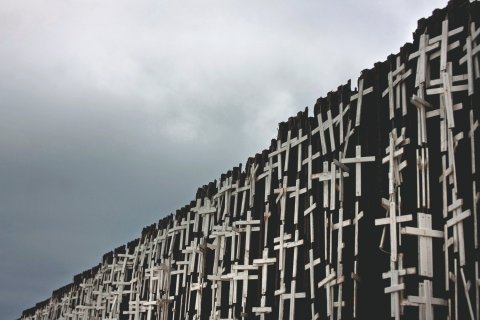
IT'S JULY 2013, three years after Omar disappeared crossing the border. In Washington, the debate about the immigration bill rages. Most of the opposition comes from those who say that the bill is too lenient toward undocumented immigrants. Few seem to notice or care that the bill's "border surge" will almost certainly mean more deaths like Omar's.
Meanwhile in Phoenix, Fermina can't forgive herself. She wonders if God took away Omar as punishment for giving away her son Gabriel to the two moms in Massachusetts. Or maybe God is punishing her because she was stupid enough to give Omar the money to come north. "I killed my son," she often says.
Fermina now lives only for Jorge, who is 24, and Veronica, who is 20. Veronica wants to be an auto mechanic but Fermina insists she stay in school. It's terrible to be illiterate, she tells Veronica, terrible to be uneducated. Once she gets Veronica through school, maybe she'll return to El Porvenir and die there.
In Guatemala, the bones of the disappeared are reappearing as mass graves are uncovered. With each new human rights trial, such as the recent genocide trial of former President Efraín Ríos Montt, there's new documentation of massacres and abuses, new hints of locations of bones. Fermina found Omar through DNA testing; maybe she can find the bones of her mother and grandparents through DNA too, she tells me. If she does, she wants to bury them in the cemetery at the bottom of the hill, near Omar.




